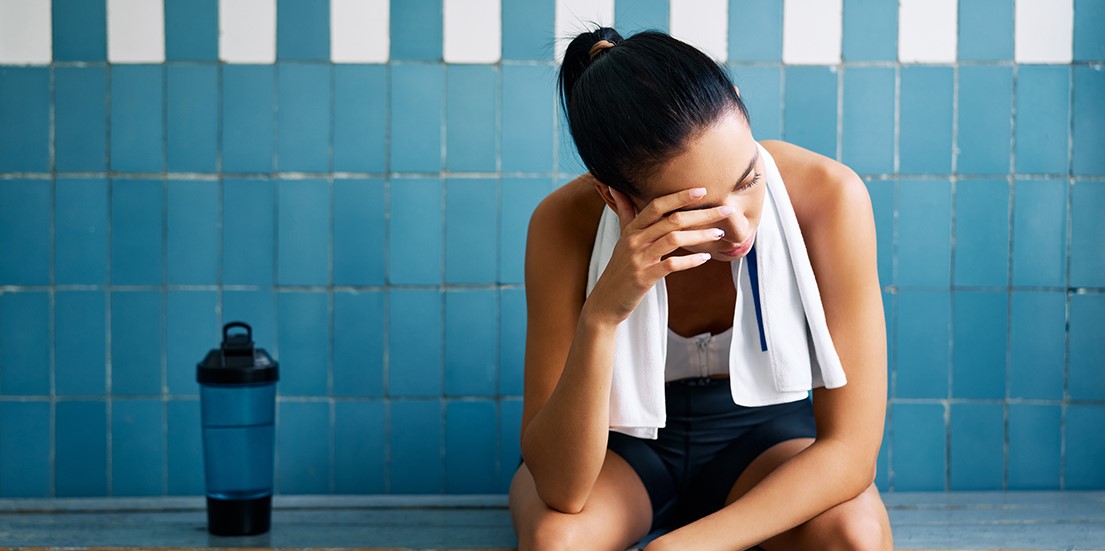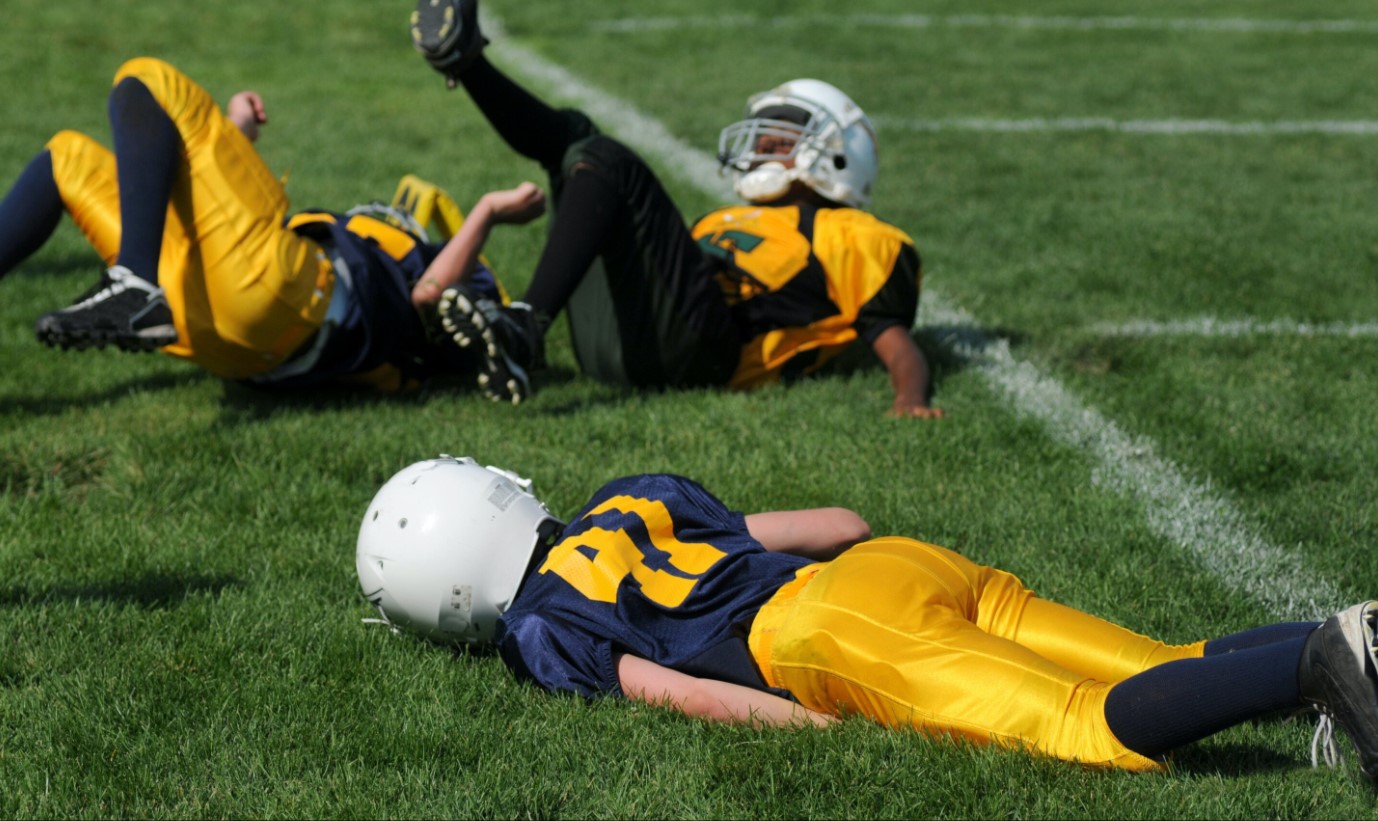Healthy Roster Mental Health Series: Mental Health and Sports
.jpg)
To coincide with Healthy Roster’s launch of SAFE Athlete, sports medicine’s first active mental health screening and alerts platform, we’ll be featuring a series of mental health related articles and personal stories. In this first installment, learn more about mental health in relation to sports and athletes.
When an athlete suffers a physical injury, the road to recovery is never easy, but it at least feels familiar. We know, for instance, that a football player who breaks their leg is most likely going to tell somebody about it, and that athletic trainers and other medical professionals will step in to assess and diagnose the injury before initiating immediate care and establishing a plan for rehabilitation. Eventually, the injury will heal, and the athlete will be cleared to play once again.
But when it comes to mental illness, the process is rarely so cut and dried. Not only are the procedures for treating mental health typically more dynamic and complex, but the stigma surrounding these conditions will often prevent athletes from expressing what’s bothering them in the first place. Furthermore, a lack of education and awareness surrounding mental health concerns can sometimes prohibit medical professionals from recognizing symptoms and administering proper diagnoses.
Make no mistake, however — for ATs, monitoring their athletes’ mental and physical health are equally important aspects of the job description. This is especially true at this moment in time, when rates of mental illness, behavioral disorders, and suicide among children and adolescents are increasing each year. While this crisis is present across all adolescent populations, the unique stressors faced by student athletes place them at an increased risk.
It’s with all of this in mind that we’ve decided to launch our new mental health initiative, SAFE Athlete, a new feature of Healthy Roster that is a secure, automated platform to Screen, Alert, Facilitate, and Engage athletes right when they need support the most. We hope that by contributing to this conversation and providing a space for further education and discussion, we can help to break down the stigma surrounding mental health in the athletic world.
A Behavioral Health Crisis
While we’ve made great strides in recent years to raise awareness about mental health issues and establish resources for students struggling with conditions such as depression and anxiety, there is still much work to do. Children and adolescents across the United States are facing a behavioral health crisis greater than ever before.
A 2015 report by the Child Mind Institute estimated that 17.1 million American children have or have had a psychiatric disorder — that’s the highest number ever reported, and it’s greater than the number of kids with cancer, AIDS, and diabetes, combined. Most distressing is the report’s claim that 80 percent of kids with a diagnosable anxiety disorder, 60 percent of kids with diagnosable depression, and 40 percent of kids with diagnosable ADHD do not get treatment.
The cost of this lack of treatment is often fatal. According to the CDC, suicide is the third-leading cause of death among 10- to 24-year-olds, resulting in approximately 4,600 lives lost each year — a number that has more than doubled since 2008. And those numbers only account for a fraction of the individuals affected by suicidal ideations. A nationwide survey of American high school students found that 16 percent of students reported seriously considering suicide, 13 percent reported creating a plan, and 8 percent reported attempting suicide. Each year, roughly 157,000 individuals between the ages of 10 and 24 go to the emergency room for self-inflicted injuries. Just this month, the Columbus Dispatch reported that Ohio’s suicide rate among children 14 and younger jumped 80 percent between 2008 and 2017. Given how devastating a single suicide or attempt can be to the friends and family of the affected individual, the human toll of these statistics are staggering.
The potential explanations for this developing crisis are many, varying from a rise in cyberbullying to the overwhelming information overload made possible by smartphones and social media. What is certain, however, is a pressing need for increased education and the breaking down of social stigma surrounding mental illness. Students can’t receive help if they can’t recognize their symptoms and feel comfortable to reach out.
Unique Stressors for Student Athletes
Given how many adolescents are affected by mental illness, it’s likely that any athletic trainer in a high school or collegiate setting will be treating students who suffer from conditions such as anxiety, depression, or ADHD. However, because of their unique schedules, responsibilities, and lifestyles, student athletes are actually at a greater risk for these types of psychiatric disorders. These additional stressors include pushing themselves (or being pushed) too hard during training, trying to balance their athletic pursuits with their academics and extracurricular activities, maintaining their weight and physique, being hazed as new members of a team, and fatigue and athletic burnout.
It’s imperative that athletic trainers are aware of the role that an athlete’s sense of identity can play in their mental health. Mental illnesses often manifest in self-critical thoughts, and because athletes are regularly encouraged to push themselves to be better, they are more likely than the average individual to subject themselves to those sorts of thought patterns. As athletic trainer Katie Ostrovecky explained in a 2017 article for the BOCATC blog, “struggling performance, chronic injury, or career-ending injuries can all negatively affect an athlete’s identity which can then lead to psychological responses such as depression, anxiety, or suicidal ideations.” Without a reliable support system, these athletes can fall deeper into the throes of mental illness.
The Role of the AT
So what can athletic trainers do to address these problems? As Ostrovecky explains, the AT’s three main goals for addressing mental health concerns should be to gain awareness and recognize the signs and symptoms, incorporate mental health assessments in pre-participation exams, and create a team plan for referral and treatment. What the implementation of these goals actually looks like within an athletic training facility can vary depending on a particular population’s needs. The Children’s Hospital Association has laid out five effective methods incorporated by adolescent health care facilities across the country to address the behavioral health crisis — these range from conducting re-education sessions with health care professionals (many providers worry that they haven’t received enough mental health training throughout their schooling and residencies) to instituting telemedicine systems to reach a greater population of affected individuals.
One tactic that has proven particularly successful among athletic trainers is the implementation of wellness screenings. Many students who are struggling with anxiety or depressive disorders don’t always recognize what they’re going through. Or, even if they do, they might not feel comfortable discussing it explicitly. By having student athletes fill out surveys with questions about their stress levels, sleeping and nutrition habits, relationships, feeling of hopelessness or lack of motivation, and levels of interest in doing things, athletic trainers can identify certain symptoms they might not have been able to recognize otherwise.
Another aspect of mental health that is unique to the athlete is the emotional stress and pain caused by medical disqualification. When an athlete’s self-worth is wrapped up in their identity as a competitor, getting sidelined can take a devastating mental toll on them. Athletic trainers should be prepared to help students through these types of situations and should familiarize themselves with different techniques and coping mechanisms they can offer to injured athletes.
Joining the Conversation
In launching this new platform, we at Healthy Roster are joining the movement of organizations and initiatives aiming to raise awareness of mental health issues, make the resources for addressing them more accessible, and reduce the stigma surrounding seeking help.
We’ve been moved by the empathetic work of writers like Kate Fagan, whose groundbreaking book “What Made Maddy Run” revealed the struggles faced by college athletes with mental illness. We’ve been inspired by individuals such as Julia Paxton, who have bravely shared stories of their own struggles in order to make others feel less alone. We’ve taken notes from campaigns such as On Our Sleeves, Half of Us, and Fresh Check Day, who are fighting to normalize mental illness, promoting open dialogue as a way to form communities and show that there’s no shame in suffering. And we’ve been encouraged by other athletic organizations such as the NFLPA, who announced a new mental health and wellness committee earlier this month, and the NHL, whose embrace of the Bell Let’s Talk movement has helped raise millions of dollars for mental health initiatives while inspiring hockey players young and old to speak out about their personal struggles.
All around the world, athletes are learning to prioritize mental wellness, and we’re proud to join the movement.
This article is informational and should not be used as medical advice.
If you need to talk to someone immediately, the National Suicide Prevention Lifeline is 1-800-273-8255. Other international suicide helplines can be found at befrienders.org. You can also text TALK to 741741 for free, anonymous 24/7 crisis support in the US from the Crisis Text Line.


